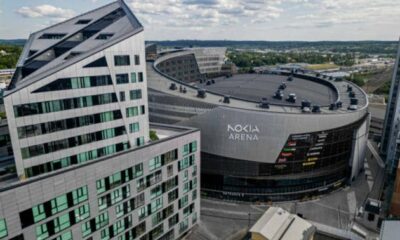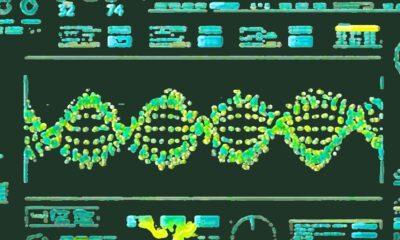Science
Infrastructure Overhaul Fuels AI Revolution at JPMorgan Chase

The modernization of infrastructure at JPMorgan Chase has significantly enhanced the company’s capacity to deploy artificial intelligence (AI) systems. By unifying and upgrading its technological foundation, the bank aims to streamline operations and foster innovation across its teams. This shift enables better data management, improved analytics, and a more collaborative environment for over 45,000 engineers working with AI.
A detailed analysis of the bank’s previous legacy systems revealed a complex and inefficient architecture. The existing setup, which included more than 2,500 legacy applications, led to data silos and hindered communication among teams. This fragmentation not only slowed down AI deployment but also restricted innovation. Developers often faced significant obstacles, spending more time troubleshooting infrastructure issues than creating new features.
In response, JPMorgan Chase’s platform engineers embarked on a comprehensive initiative to rebuild the core technology stack. The vision was not just to facilitate a few AI models but to create a versatile platform that all teams could utilize. This approach aimed to transition from disconnected AI experiments to a cohesive and systematic integration of intelligence across the organization.
Creating a Centralized AI Backbone
At the heart of this transformation is a centralized AI backbone designed to make AI an integral part of the bank’s operations. This new enterprise platform allows for the building, training, deployment, and management of machine learning models on shared infrastructure. The result is a streamlined process that reduces duplication and accelerates project timelines.
The scale of this achievement is remarkable. The new architecture consolidates more than 450 petabytes of data into a single framework, supporting over 6,000 applications. This standardization has replaced redundancy with simplicity, fostering collaborative behaviors among teams that previously operated in isolation. For instance, compliance teams can now access real-time data alongside risk analysts, enabling more informed decision-making.
The modernization also involved a significant shift to a cloud-native architecture, with approximately 38% of infrastructure migrated to the cloud. This transition not only enhances flexibility and scalability but also reduces costs associated with excessive on-premises infrastructure. The new setup allows engineering teams to allocate resources dynamically, facilitating rapid experimentation and deployment of AI models.
Investing in Internal Tools for Seamless Integration
A crucial aspect of this modernization was the investment in internal tools designed to enhance the scalability of AI initiatives. The platform introduced a variety of resources, including templates, feature stores, and versioned datasets. These tools enable engineers to develop and deploy AI models with minimal friction, ensuring that security and quality are maintained.
As a result, the timelines for model deployment have dramatically improved. Teams can now test ideas in hours rather than weeks, integrating AI into everyday workflows. This shift not only enhances productivity but also fosters a culture of innovation within the organization. AI is no longer confined to specialized teams; instead, it has become a fundamental aspect of operations across various functions.
The impact of this project is quantifiable. The consolidation of infrastructure and the removal of outdated systems have led to annual savings exceeding $300 million. Beyond cost reductions, the platform has enabled a rapid transition from prototype to production, allowing for the creation of new processes and solutions that drive value.
As teams embrace this new approach, the organization benefits from improved analytics capabilities and more sophisticated decision-making. Enhanced data infrastructure empowers teams to make better choices, ultimately leading to superior customer experiences and a more agile business model.
The cultural shift resulting from this initiative is significant. Traditionally, AI has been viewed as a specialized tool managed by experts. The new platform challenges this perception by equipping all engineers with the resources to leverage AI effectively. This change fosters a mindset of exploration and collaboration, prompting teams to consider how they can utilize AI to enhance their work.
Looking ahead, JPMorgan Chase is poised for further advancements. With a robust foundation in place, the company plans to incorporate new technologies such as real-time explainability, federated learning, and synthetic data generation. This proactive approach not only positions the bank to keep pace with the evolving landscape of artificial intelligence but also allows it to shape future developments.
In conclusion, the ongoing infrastructure modernization at JPMorgan Chase serves as a powerful example of how foundational engineering can drive significant change. By investing in a unified platform that prioritizes AI integration, the bank is not merely enhancing efficiency; it is paving the way for a future where every team can harness the potential of intelligent systems.
-

 Politics4 weeks ago
Politics4 weeks agoSecwepemc First Nation Seeks Aboriginal Title Over Kamloops Area
-

 World5 months ago
World5 months agoScientists Unearth Ancient Antarctic Ice to Unlock Climate Secrets
-

 Entertainment5 months ago
Entertainment5 months agoTrump and McCormick to Announce $70 Billion Energy Investments
-

 Science5 months ago
Science5 months agoFour Astronauts Return to Earth After International Space Station Mission
-

 Lifestyle5 months ago
Lifestyle5 months agoTransLink Launches Food Truck Program to Boost Revenue in Vancouver
-

 Technology3 months ago
Technology3 months agoApple Notes Enhances Functionality with Markdown Support in macOS 26
-

 Lifestyle3 months ago
Lifestyle3 months agoManitoba’s Burger Champion Shines Again Amid Dining Innovations
-

 Top Stories2 months ago
Top Stories2 months agoUrgent Update: Fatal Crash on Highway 99 Claims Life of Pitt Meadows Man
-

 Politics4 months ago
Politics4 months agoUkrainian Tennis Star Elina Svitolina Faces Death Threats Online
-

 Sports5 months ago
Sports5 months agoSearch Underway for Missing Hunter Amid Hokkaido Bear Emergency
-

 Politics5 months ago
Politics5 months agoCarney Engages First Nations Leaders at Development Law Summit
-

 Technology5 months ago
Technology5 months agoFrosthaven Launches Early Access on July 31, 2025





















